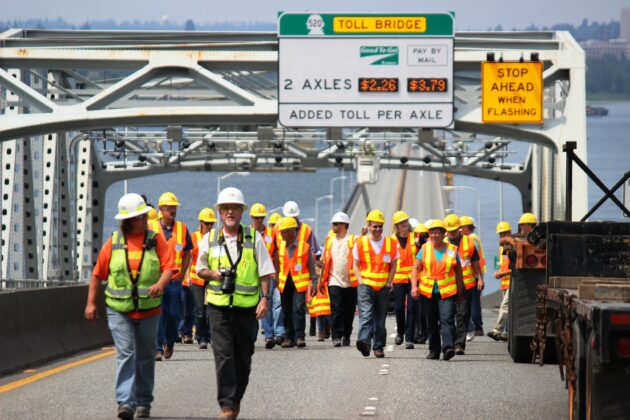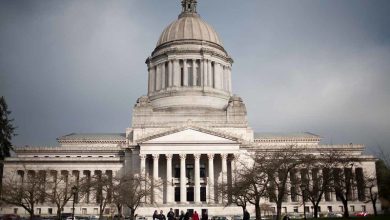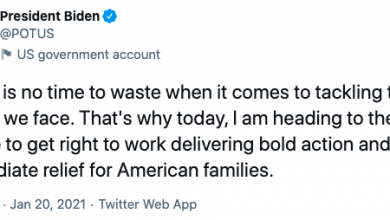Good To Go! — or not: Washington state’s tolling software switchover will take 2 weeks, but why?

When the Washington State Department of Transportation announced that both the Good To Go highway toll payment system and its call center were going dark for a two-week refresh, the reaction from software and systems engineers was immediate: Why does the state take so long for an upgrade? Why does the old system need to go dark while it happens?
And most importantly, why do we have to pay tolls while the system is down?
Industry experts contacted by GeekWire had a range of opinions. Some lauded the savings gained from turning off the platform for a short time rather than managing the complexity and labor of running parallel, real-time billing systems.
Others wondered why a state with so much tech talent sometimes seems so inadequate at tech.
“Outages of a few minutes to a few hours are more usual and reasonable,” said Bill Schrier, former CIO Seattle Police Department and former CIO/CTO City of Seattle. “The City of Seattle has done multiple replacements of its Seattle Public Utilities and Seattle City Light billing systems without such outages, especially taking down a call center.
“It certainly seems odd and unusual to me.”
The questions became more pointed when the state delayed starting the process for another two weeks after initial beta testing of the new system indicated it was not ready for implementation. Additionally, the state also is moving the Good To Go call center and 155 employees from Seattle’s U District to Renton.
As it stands right now, the state will turn off the Good To Go website and call center on July 2 and reopen both with a new contractor, ETAN, on July 19. If drivers accrue tolls during that time, they will still need to pay them but can’t until the system reopens. The state will forgive late fees associated with the temporary shutdown.
Customers with Good To Go accounts can top them up beforehand.
We gathered your questions about the system changeover and put them to Jennifer Charlesbois, roadway toll systems project engineer for WSDOT, and Patricia Michaud, customer service operations manager for WSDOT. Questions and answers were edited for clarity and brevity.
Why does it take two weeks with a system fully shut down?
Jennifer Charlesbois: What we saw was that a two-week outage is very average for what other agencies have experienced in their system transitions. So this is not atypical for this type of system transition, specifically, tolling back-office systems.
Why is it that this happens at the same time that the call center is down? Could you not do those two switches at different times?
Charlesbois: While the (online) system is unavailable we didn’t feel like it would be appropriate to have our call center answering calls and not be able to assist customers. They would not have access to customer accounts or perform any activities for customers. In addition, the parts of the systems that were replaced include the telephony systems. That would complicate trying to keep the call center open. I will also add that we’ve done our best to get this information out to customers.

What were the liabilities in the old system?
Charlesbois: Our existing system was implemented in 2011. We’re going on 10 years old for this system. So it’s reaching end-of-life. We looked at what were our largest pain points in the existing system. What we’ve heard from customers is that the system can be a bit antiquated and needs modernization. Our website definitely will benefit from all of the work that we’ve done. We looking to address some issues with our existing system like the ability to perform a lot of top tasks online without having to call our customer service center.
Can you give me an example?
Charlesbois: Sure. For example, if a customer wants to reset their password online that now can be done online. Also some major things, like if a customer doesn’t have a Good To Go account with us and receives a toll bill, our new system will allow them to see how much money they can save if they open a Good To Go account. (The customer then) can perform that task online and receive discounts on previous tolls when they open their (new) account. Those are activities that previously would have required customers to call into the call center.
Given the well-documented cybersecurity problems with Employment Security, what sort of guarantees does the new contractor (ETAN) offer regarding online security?
Charlesbois: We completely understand that cybersecurity is on everybody’s minds. That’s on the top of our minds as well. Our highest priority is the safety and security of our customers’ information. The new system as well as the transition process will be in compliance with all of the industry’s strictest protocols. We’ve also been working with our own IT teams as well as the state’s Office of Cybersecurity, to ensure that we are doing everything we can to ensure the safety and security of customer information.
Is the effort to make the online end more efficient also an effort to de-emphasize the call center?
Patricia Michaud: Our hope is that these new tools will improve efficiencies and we have a call center with a smaller footprint. In the short-term what we anticipate is it will be very busy once we bring on the system so we’re expecting high call volumes and longer wait times until customers get familiar with the website, and until the call center (employees) get familiar with the new system as well.
So in the short term, the call center will remain the same but in the long term, it will be de-emphasized?
Michaud: Yes.
If the system is turned off as it is scheduled to do on Friday July 2, why should people have to pay a toll for two weeks until it is restarted?
Charlesbois: Essentially, we would lose two weeks of toll revenue. (Editor’s note: That amount would approximately be $6 million over 14 days, according to state figures.) That revenue is legally mandated to go to repay for bonds for the (highways) 520, 99, and the Tacoma Narrows Bridge. (Suspending tolls was) not a solution that was legally available to us. I honestly can’t think of a time when we suspended tolls.
Editor’s note: This story was updated with comments from Schrier.
Conclusion: So above is the Good To Go! — or not: Washington state’s tolling software switchover will take 2 weeks, but why? article. Hopefully with this article you can help you in life, always follow and read our good articles on the website: Ngoinhanho101.com





